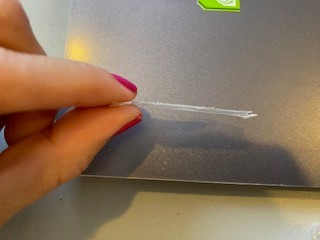Interface and Application Programming
Interface and Application Programming refers to the creation and development of user interfaces and software applications that allow users to interact with computer systems, electronic devices, or online services. This area of programming encompasses a wide range of activities and technologies intended to facilitate interaction between humans and computers.
Some key areas that can be included in Interface and Application Programming are:
Development of user interfaces (UI)
Application programming (App Programming)
Web applications development
Application Programming Interfaces (API) Programming
Development of user interfaces for specific devices
Some UI design tools are:
Adobe XD
Figma
Sketch
Corel Vector
Stages of the process
Stage 1: requirements
Stage 2: QT/phyton
Stage 3: Result
Stage 4: Results
1. Idea
This week I tried to make a film for a microfluidics device with natural polymers.
A microfluidic device is a small-scale system that manipulates and controls fluids at the microscale level, typically within channels or chambers with dimensions on the order of micrometers to millimeters. These devices are often fabricated using microfabrication techniques borrowed from the semiconductor industry, such as photolithography and soft lithography. Microfluidic devices offer precise control over the flow, mixing, and manipulation of fluids, and they find applications in various fields, including biology, chemistry, engineering, and medicine. Some common features and applications of microfluidic devices include: Lab-on-a-chip systems: Microfluidic devices can integrate multiple laboratory functions onto a single chip, enabling tasks such as sample preparation, analysis, and detection to be performed rapidly and with minimal sample volumes. Biomedical diagnostics: Microfluidic devices are used for point-of-care diagnostic tests, such as detecting pathogens, biomarkers, and genetic mutations. These devices can analyze small volumes of biological samples, offering fast and sensitive detection methods. Drug delivery systems: Microfluidic devices can be designed to precisely control the release of therapeutic agents, such as drugs or nanoparticles, at specific locations and rates within the body. This targeted drug delivery approach can improve treatment efficacy while minimizing side effects. Cell culture and tissue engineering: Microfluidic devices provide controlled microenvironments for culturing cells and tissues, allowing researchers to study cellular behavior, interactions, and responses under physiologically relevant conditions. These devices can also be used to create tissue constructs for regenerative medicine applications. Chemical synthesis and analysis: Microfluidic devices enable the synthesis of chemical compounds and the screening of reaction conditions on a small scale, leading to increased efficiency and reduced reagent consumption. They are also used for rapid chemical analysis, such as chromatography and spectroscopy. Overall, microfluidic devices offer versatile platforms for performing a wide range of tasks involving fluid manipulation and analysis, with potential applications across various scientific and technological disciplines.
2. Materials
Chitosan: Chitosan, a biocompatible and biodegradable polysaccharide derived from chitin, has been integrated into microfluidic devices for various applications due to its unique properties. Here are some ways chitosan has been used in microfluidic devices: Surface Modification: Chitosan can be used to modify the surface properties of microfluidic channels. By coating the channel walls with chitosan, researchers can alter the surface chemistry to control the flow behavior of fluids, enhance biocompatibility, and promote specific interactions with biomolecules or cells. Cell Culture and Tissue Engineering: Chitosan-based hydrogels have been incorporated into microfluidic devices to create microenvironments suitable for cell culture and tissue engineering applications. These hydrogels provide mechanical support and mimic the extracellular matrix, facilitating cell adhesion, proliferation, and differentiation within the microfluidic system.
Agar-agar: Agar agar, a gelatinous substance derived from seaweed, has been explored in microfluidic devices for various applications due to its biocompatibility, transparency, and ability to form stable gels at relatively low temperatures. Here are some ways agar agar has been integrated into microfluidic devices: Hydrogel Formation: Agar agar can be used to create hydrogel structures within microfluidic channels. By flowing an agar agar solution into microchannels and allowing it to gel, researchers can create stable three-dimensional structures that can mimic tissue environments or serve as scaffolds for cell culture and tissue engineering applications.
Alginate of sodium: utilized in microfluidic devices due to its unique properties, including biocompatibility, biodegradability, and the ability to form hydrogels in the presence of divalent cations such as calcium ions. Here are some ways sodium alginate has been integrated into microfluidic devices: Hydrogel Formation: Sodium alginate is commonly used to create hydrogel structures within microfluidic channels. By flowing an alginate solution into microchannels and subsequently introducing a solution containing calcium ions, researchers can trigger the gelation of sodium alginate, resulting in the formation of stable hydrogel structures. These alginate hydrogels can serve as scaffolds for cell encapsulation, tissue engineering, and drug delivery applications within the microfluidic platform.







Conclusion
This week was not so complex This week I tested materials with which I had never developed a microfluidics device. I obtained a very thin, waterproof film which I can evaluate its resistance in cell growth evaluations. Better studies are required to evaluate the best drying temperature and time. The mixture of polymers made seems to be a good alternative for the bafrication of biofilms for microfluidic devices without the need for post-manufacturing biofunctionalization.
